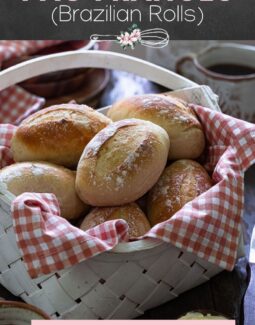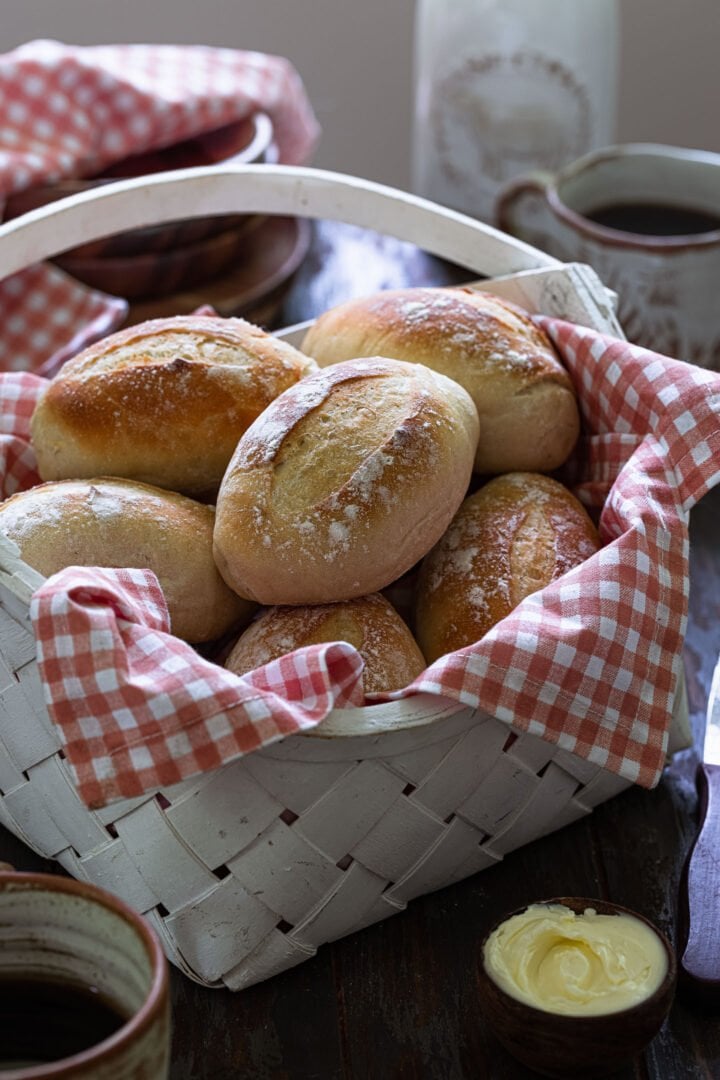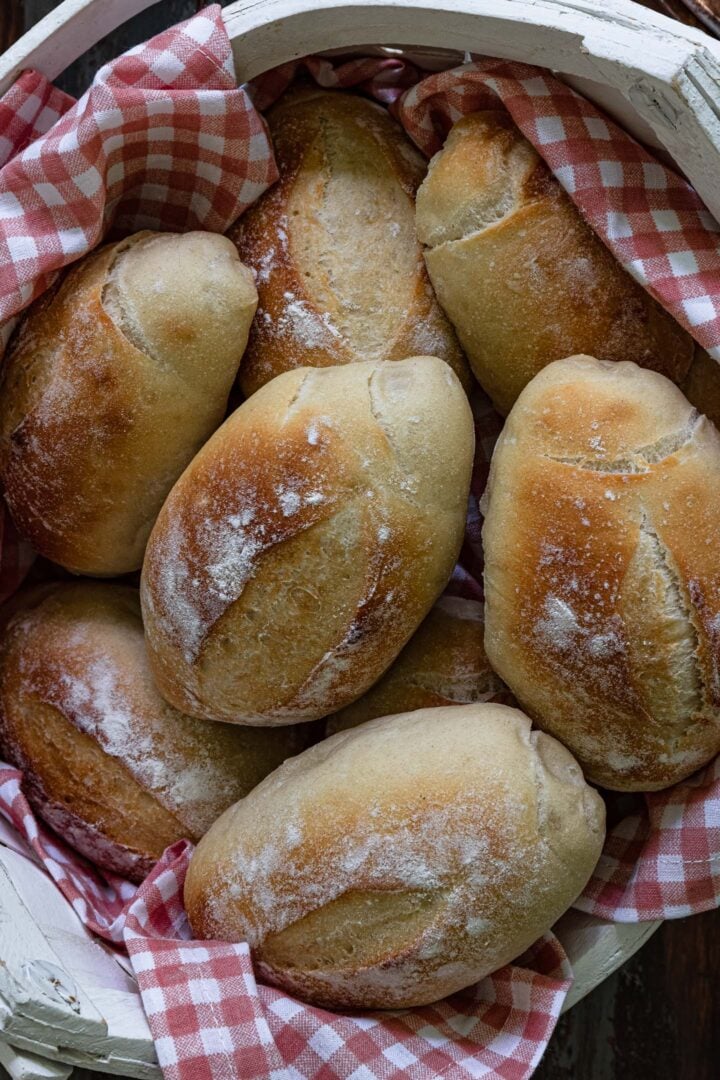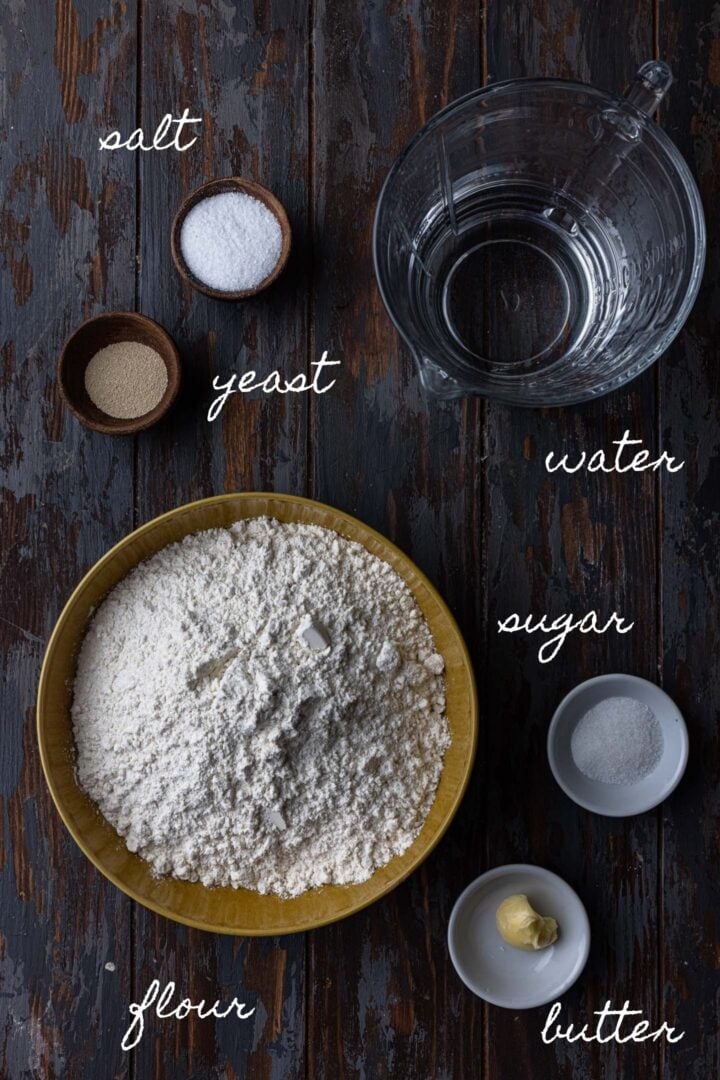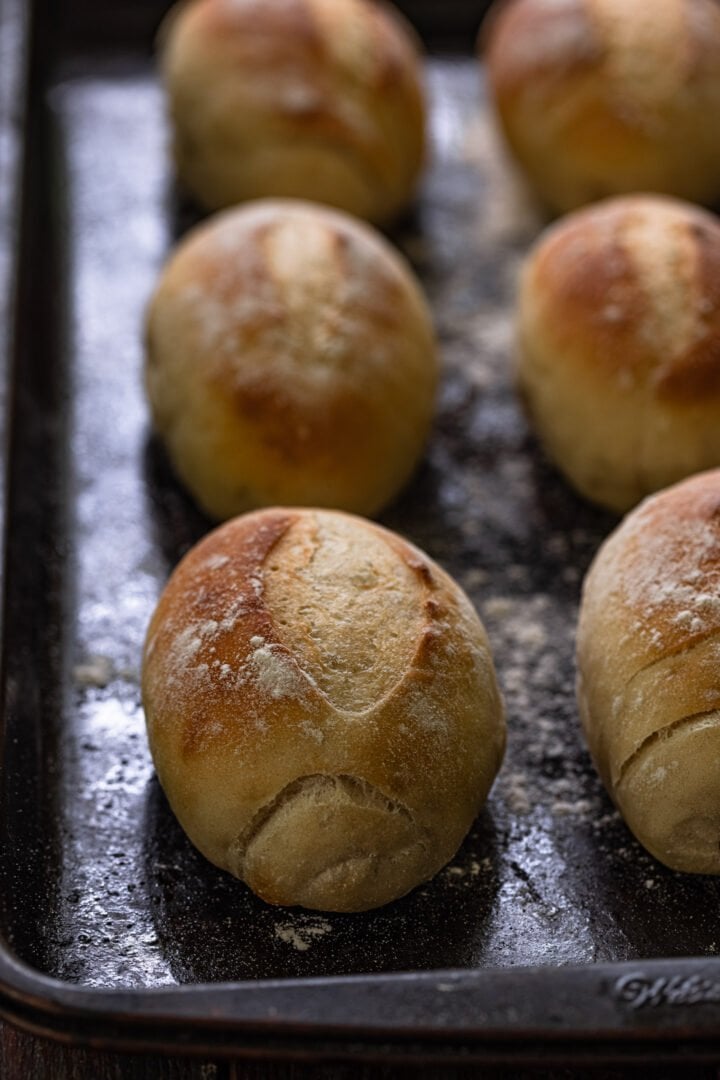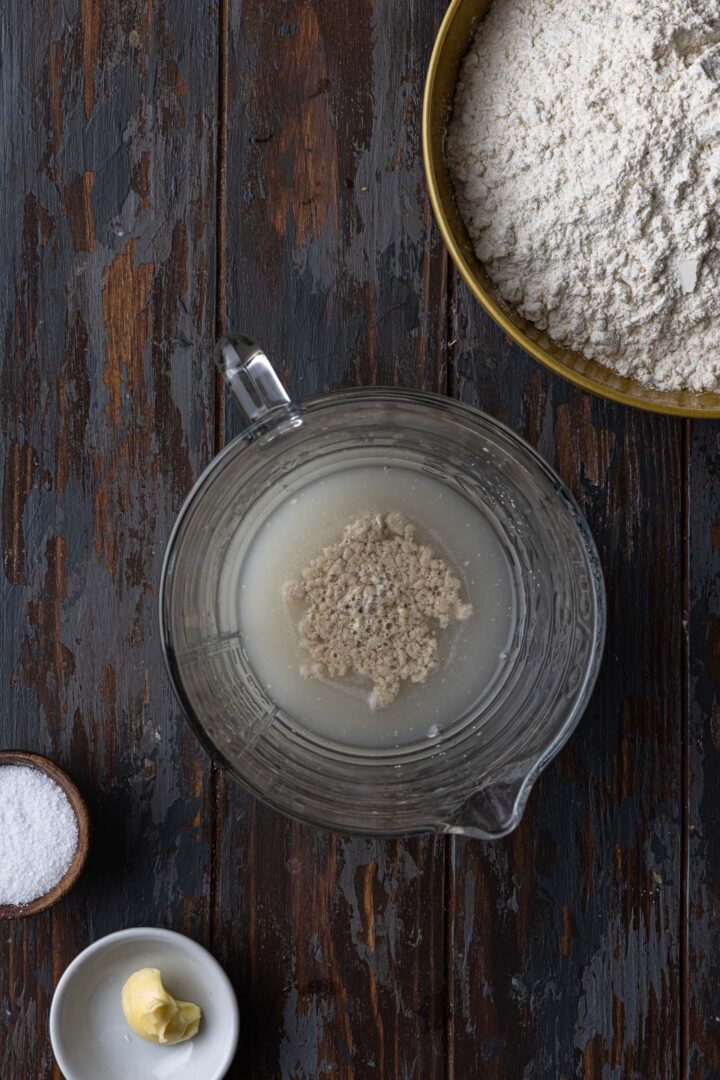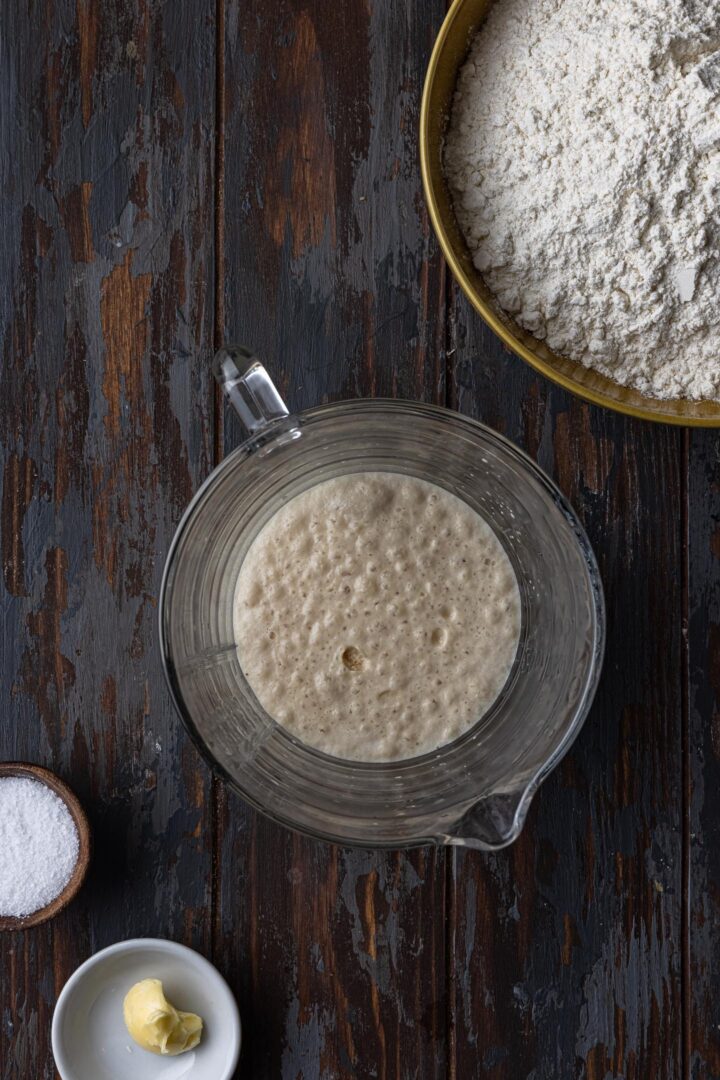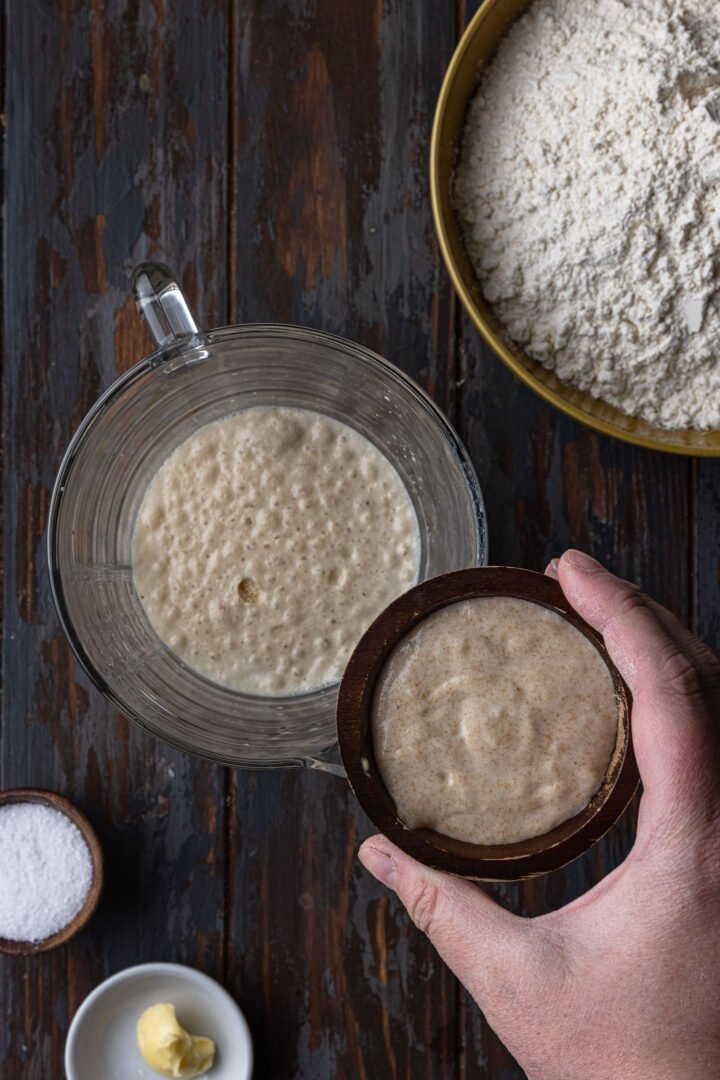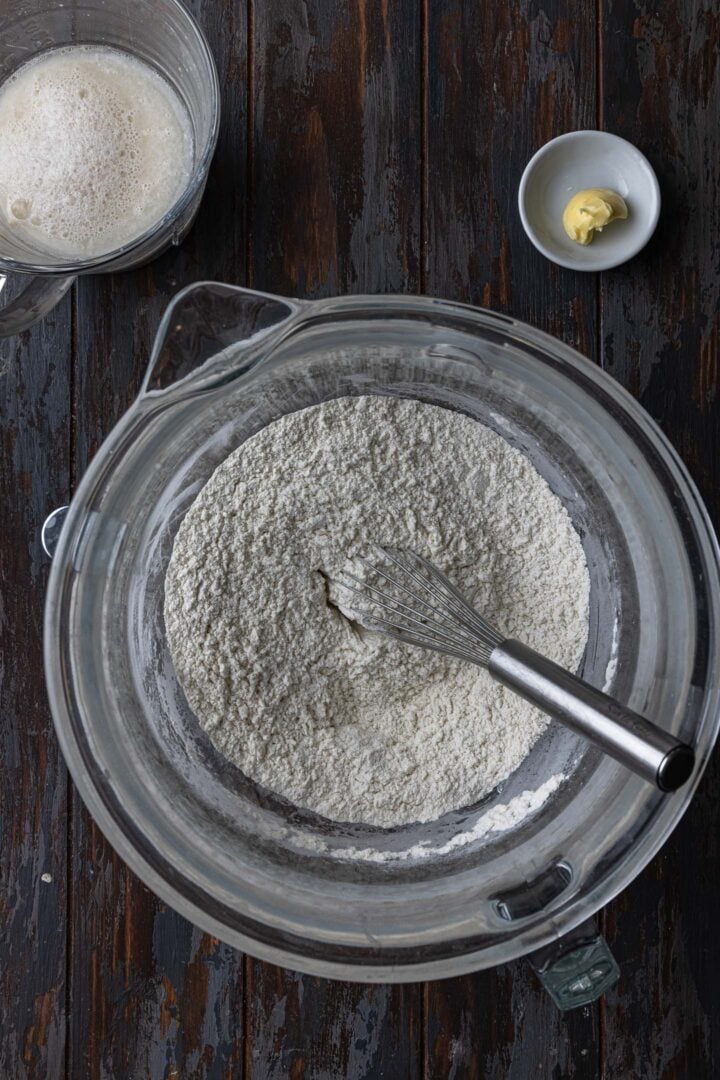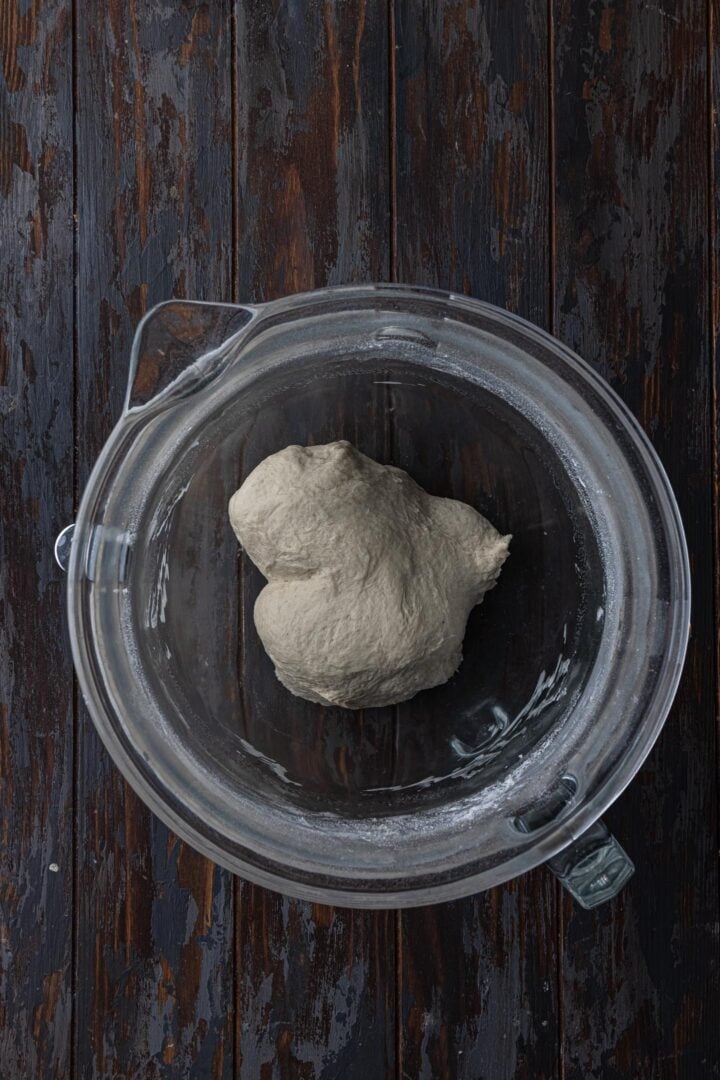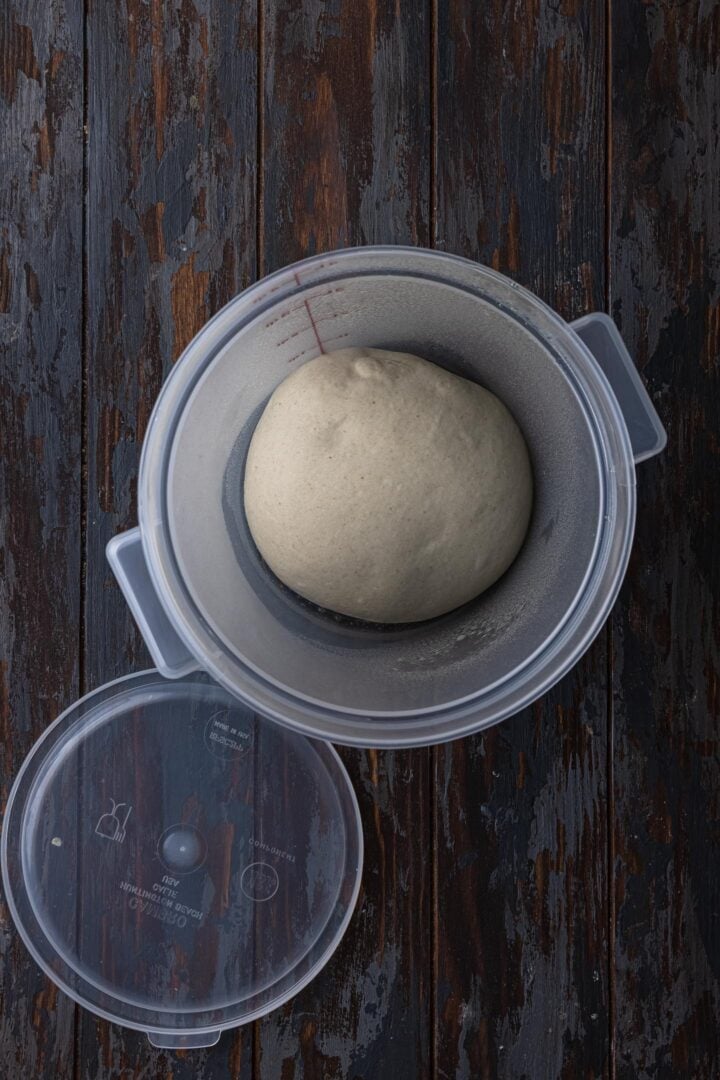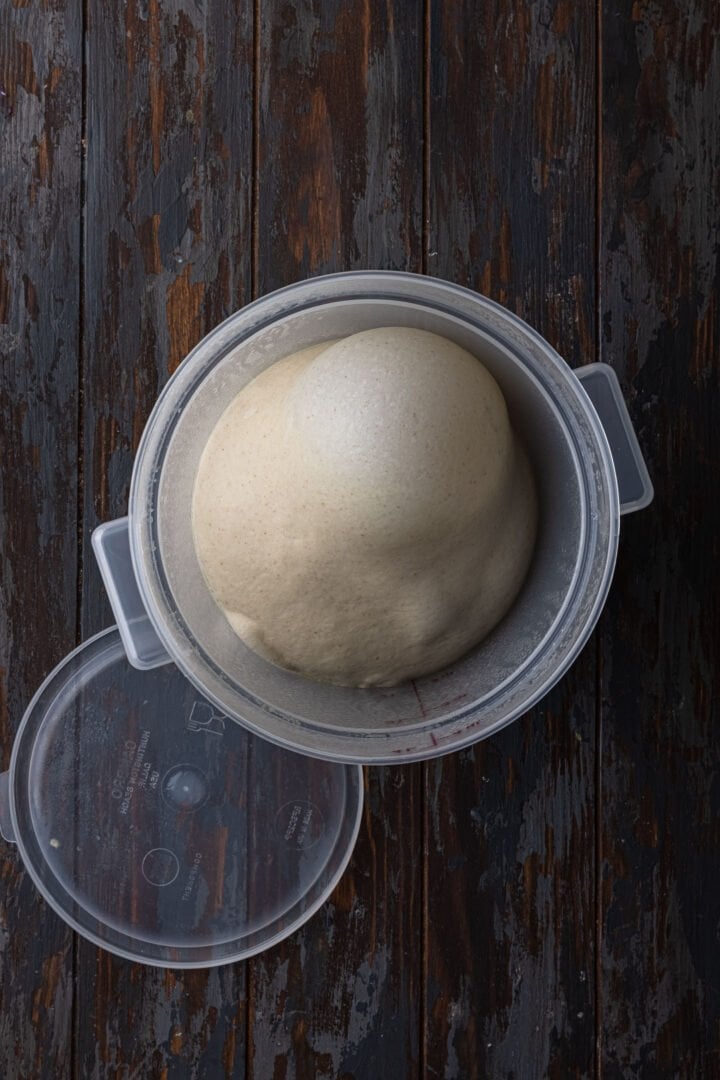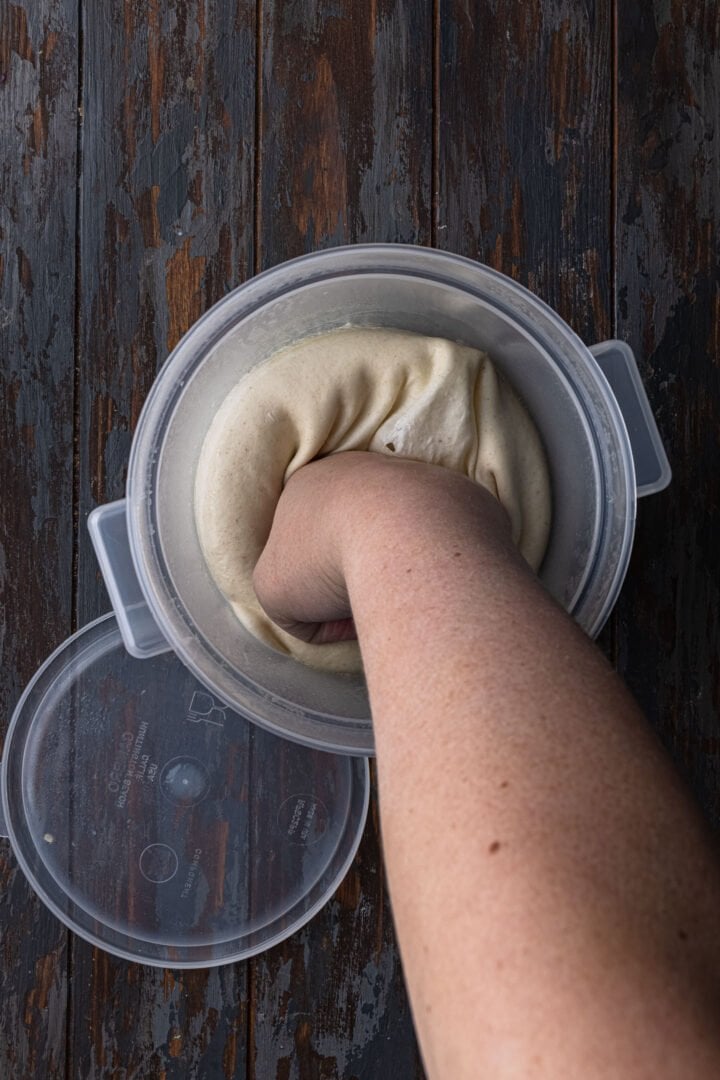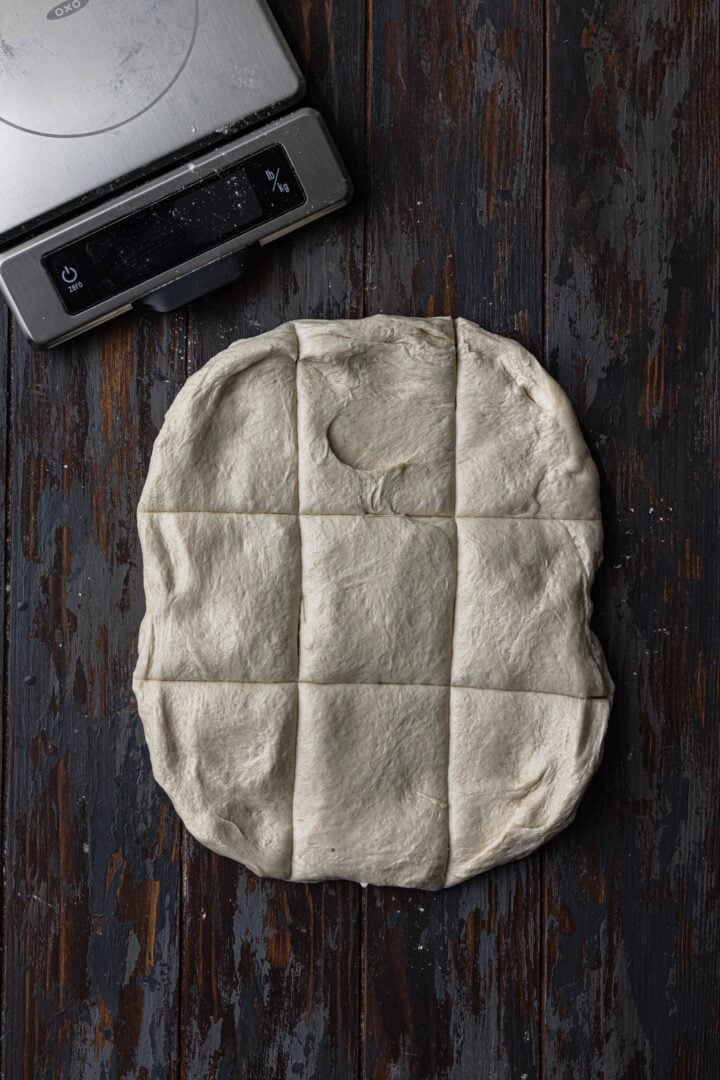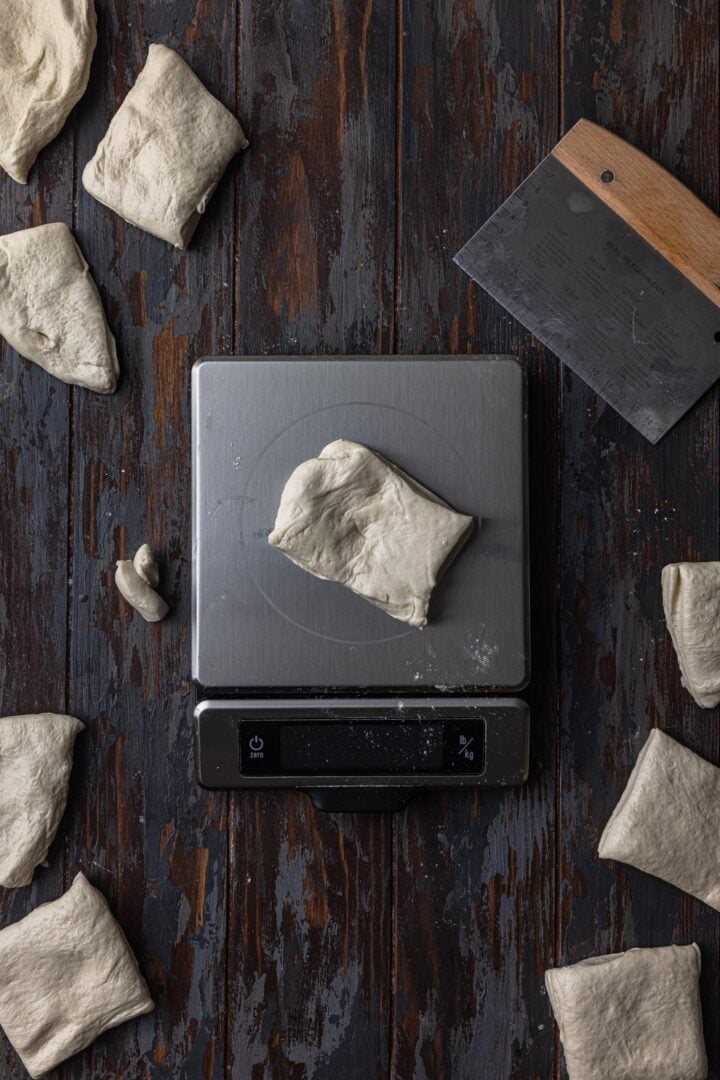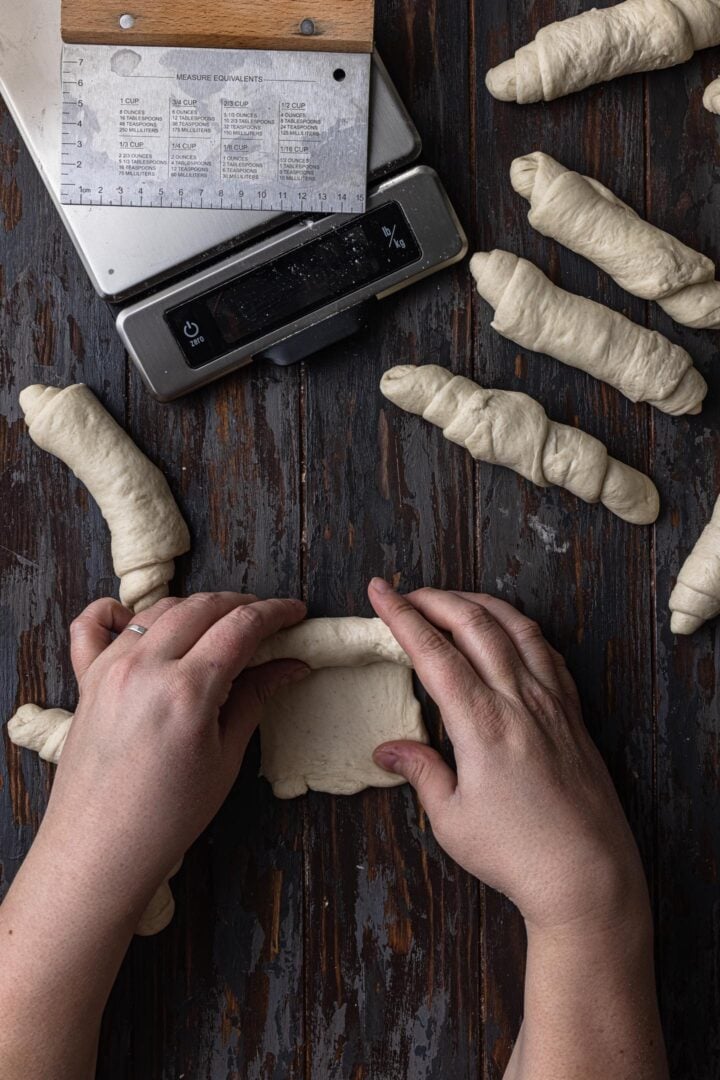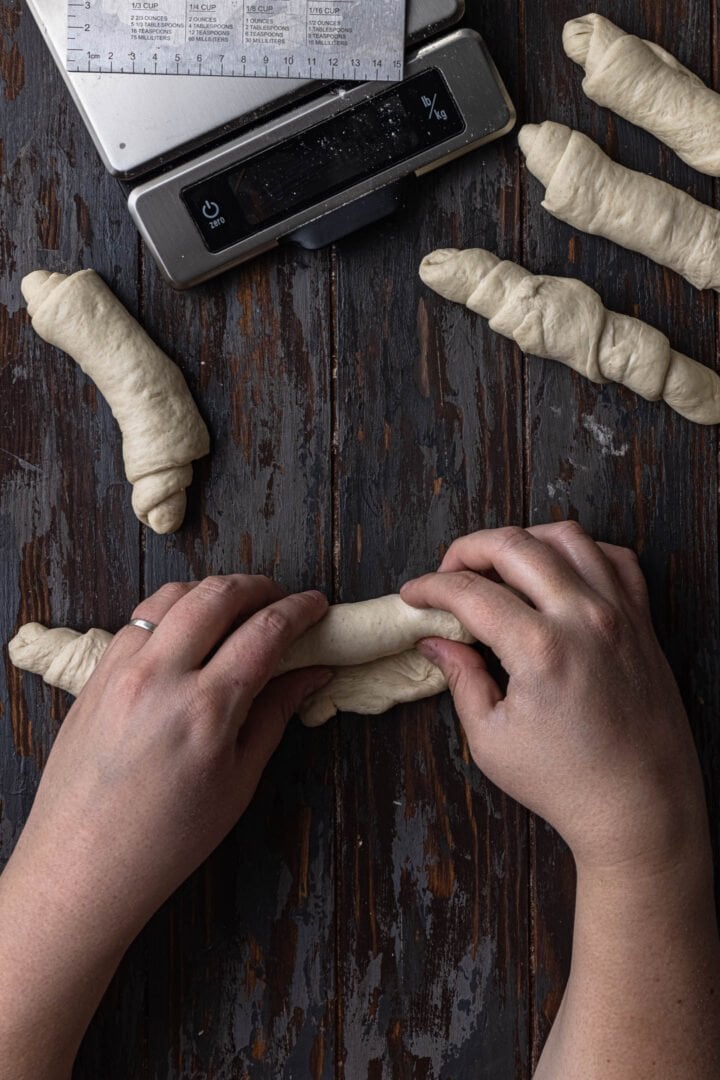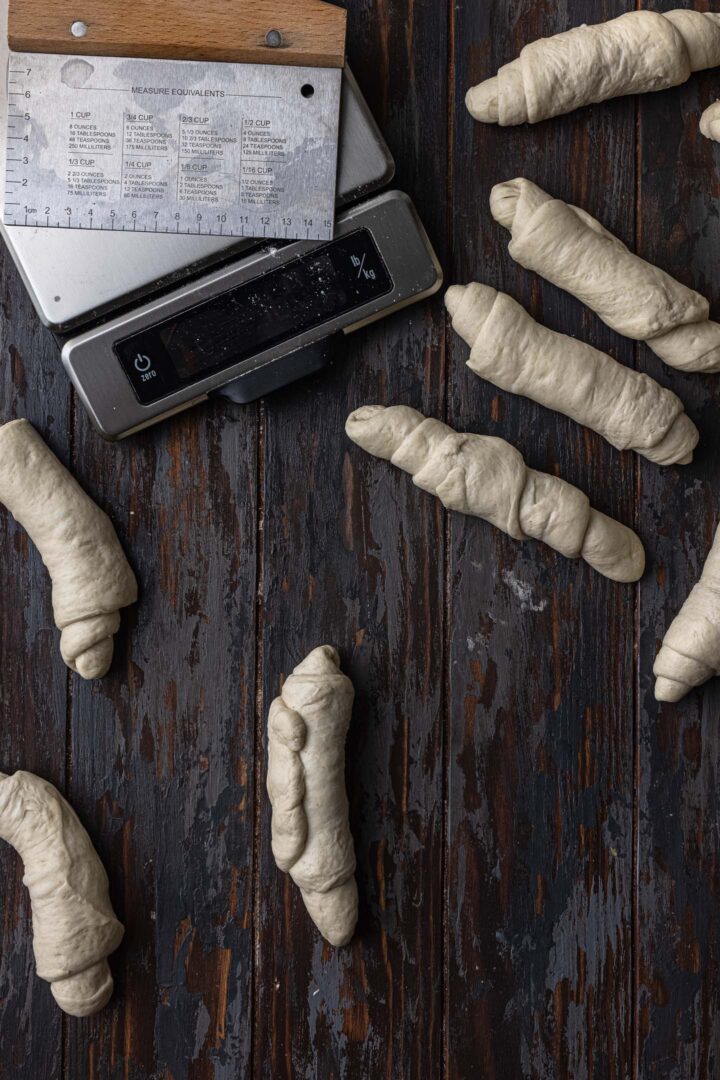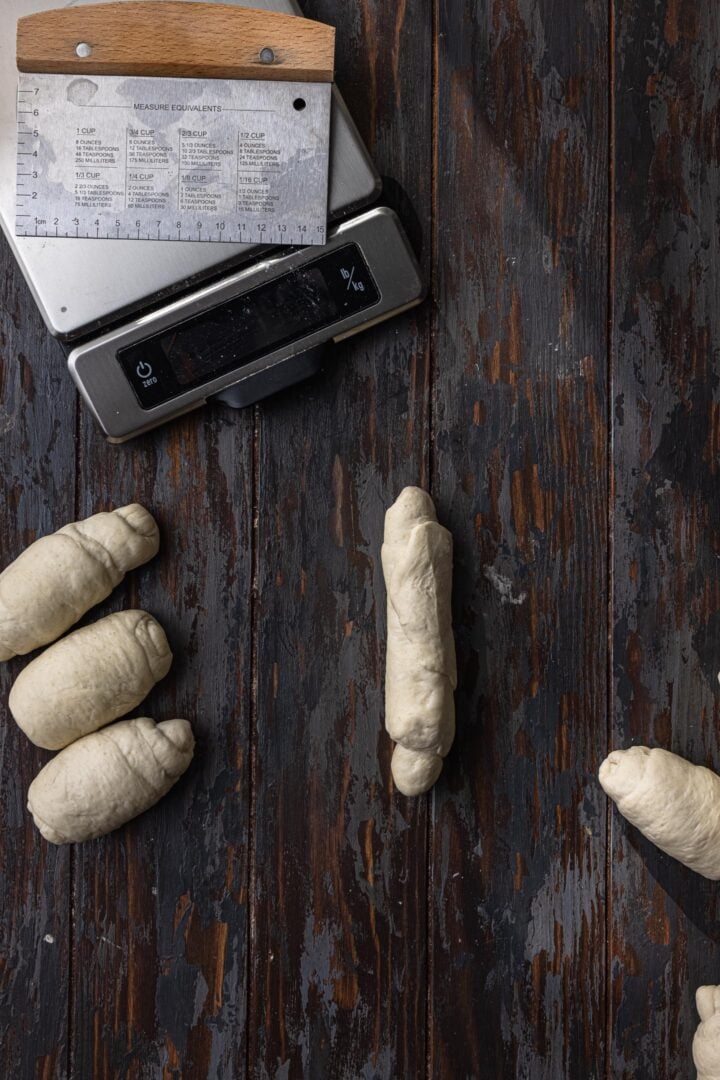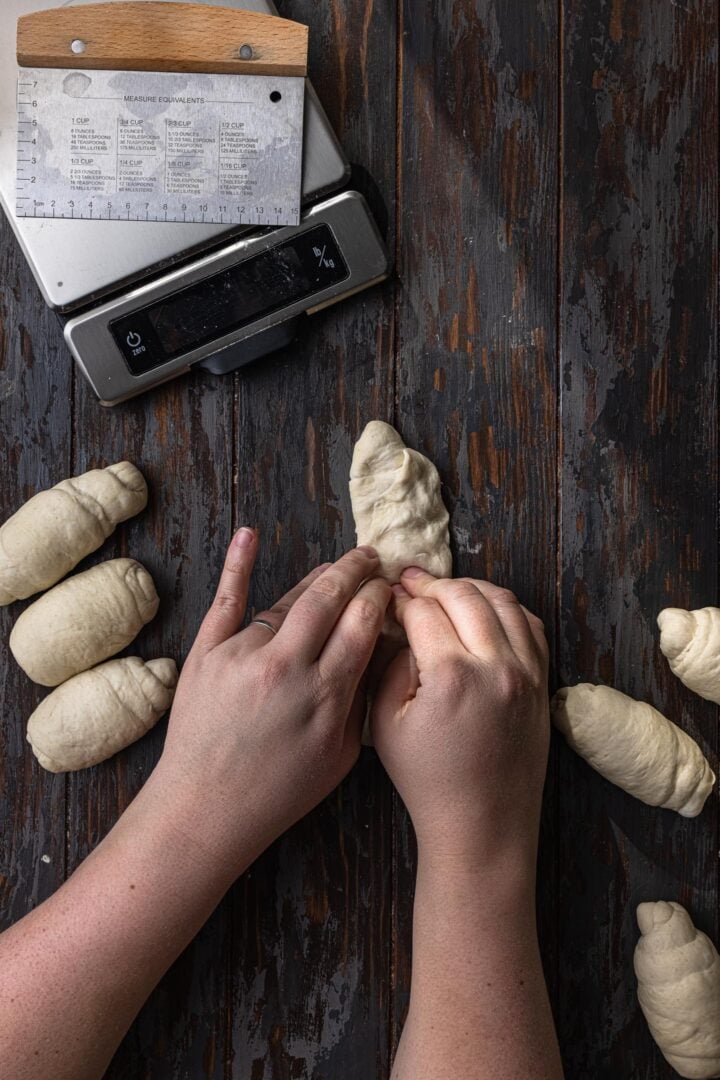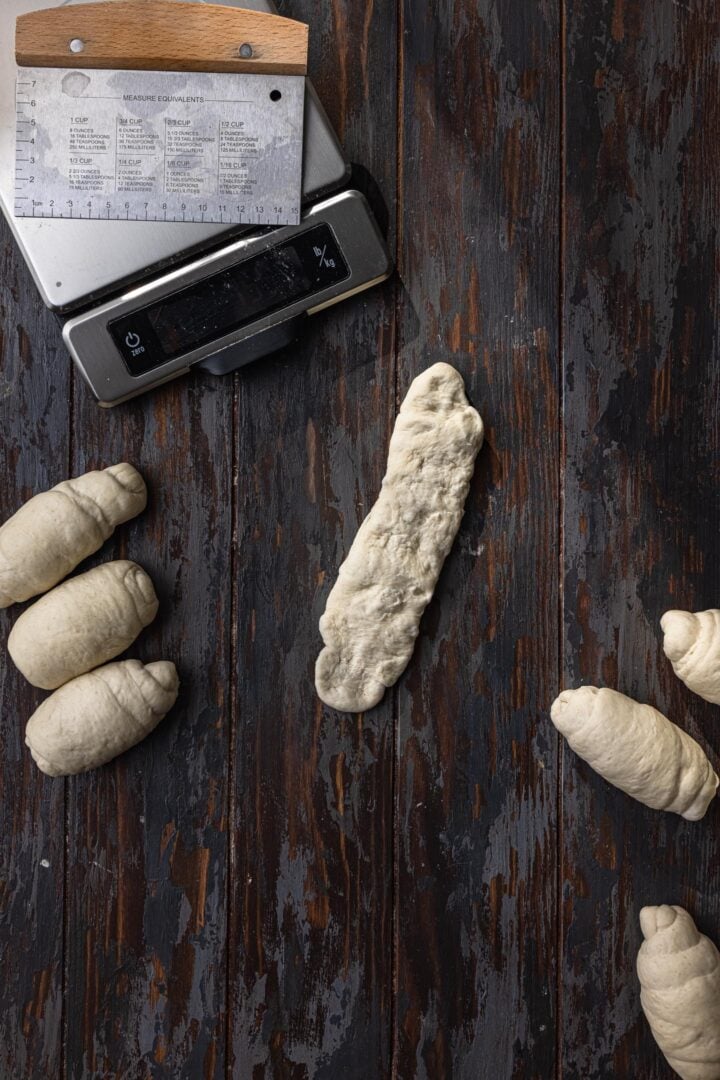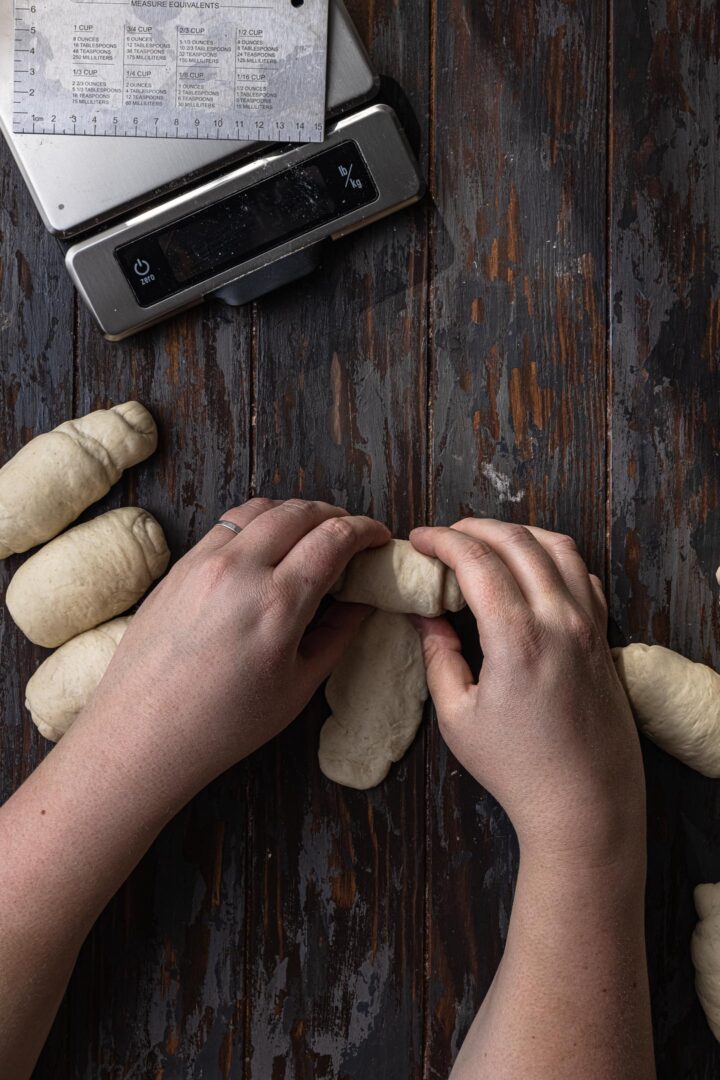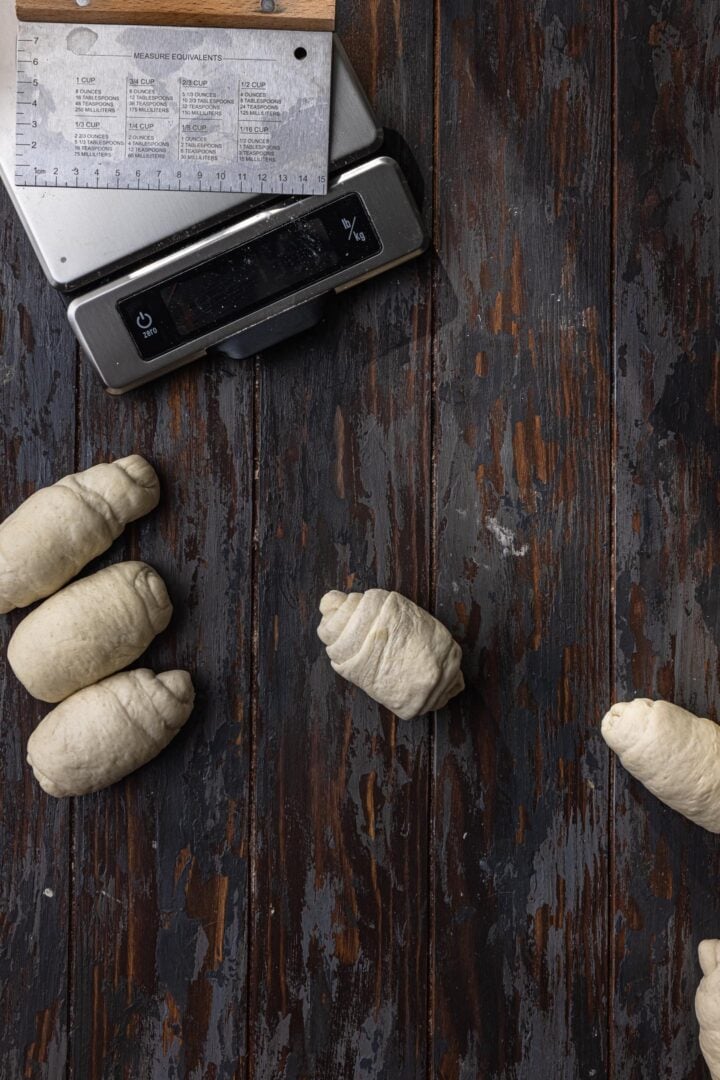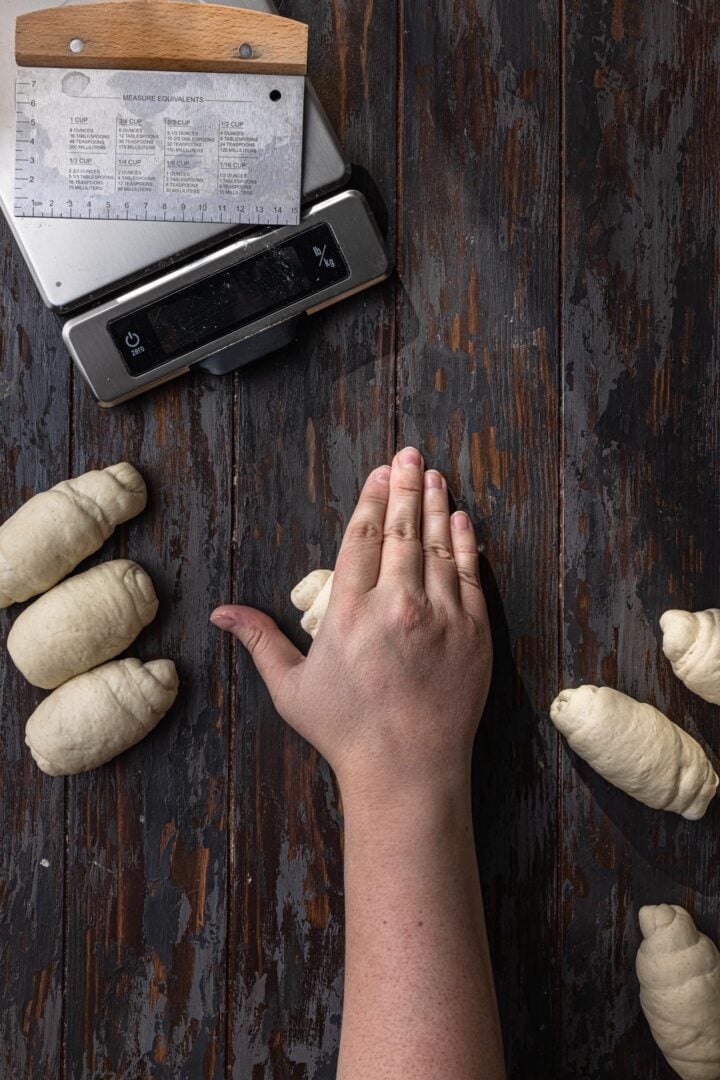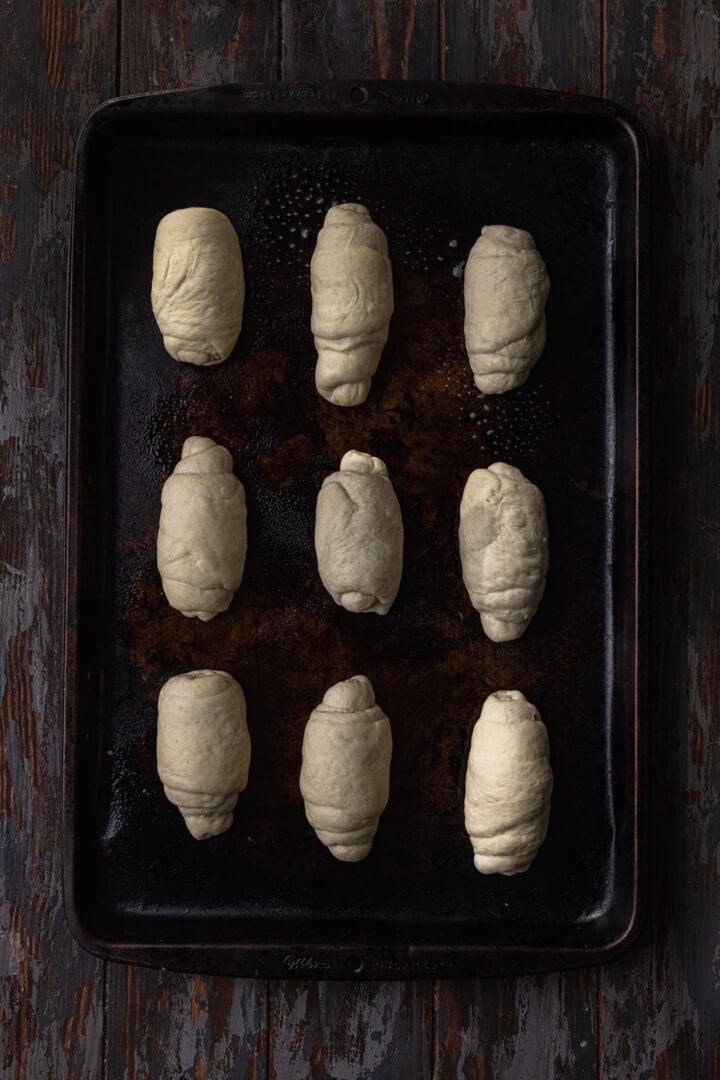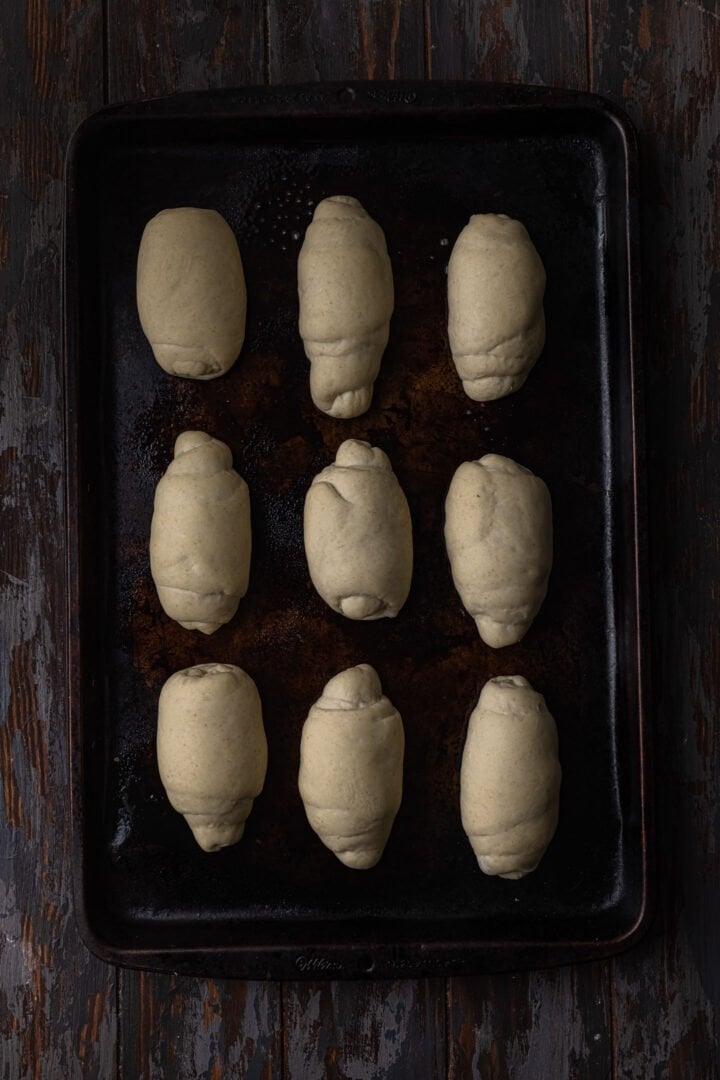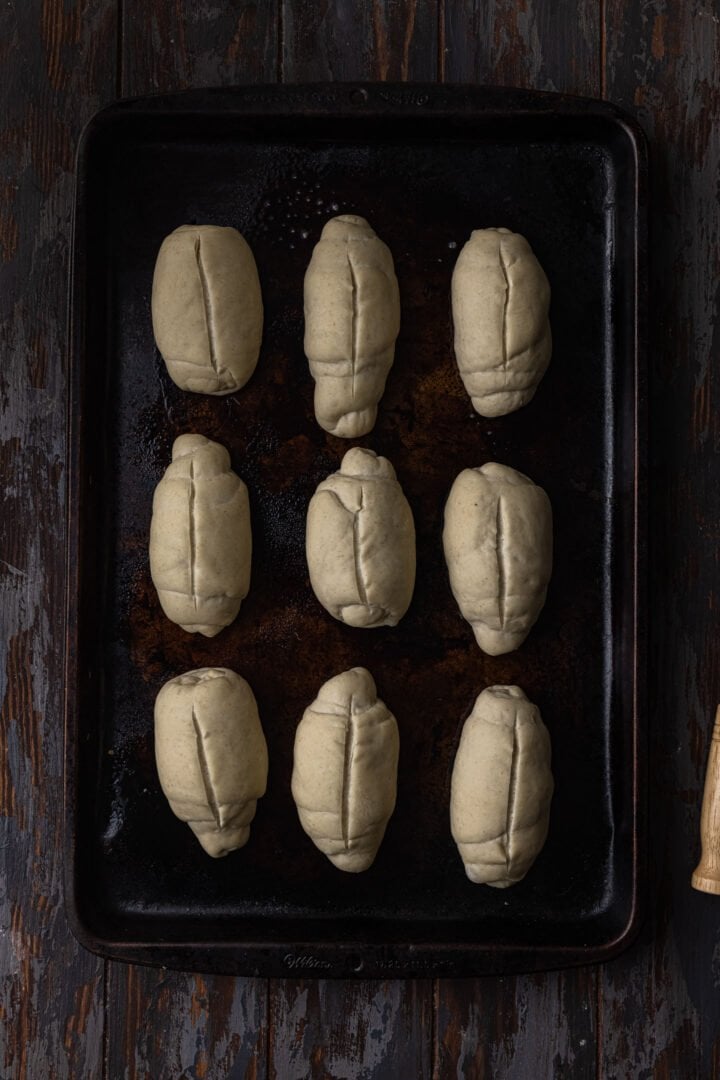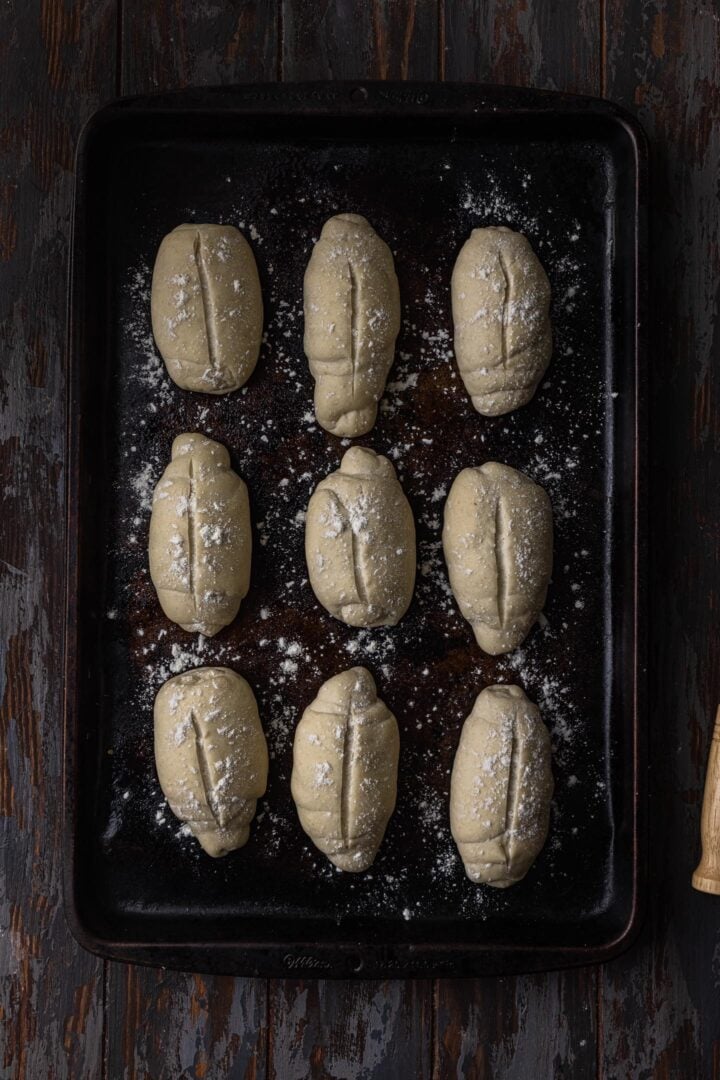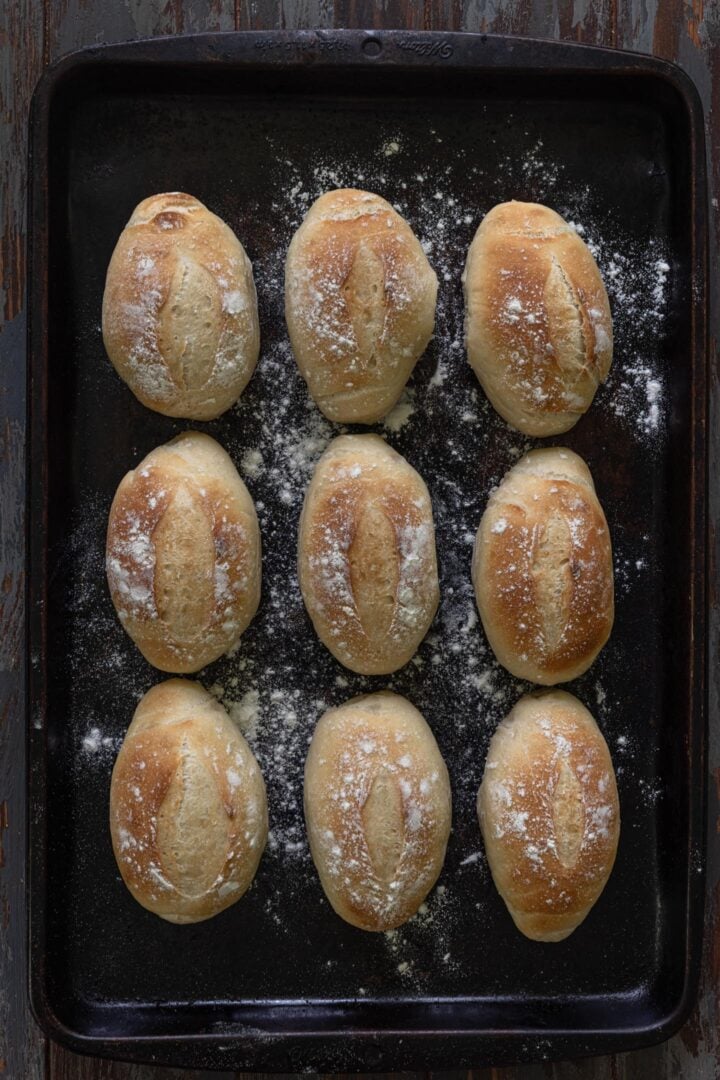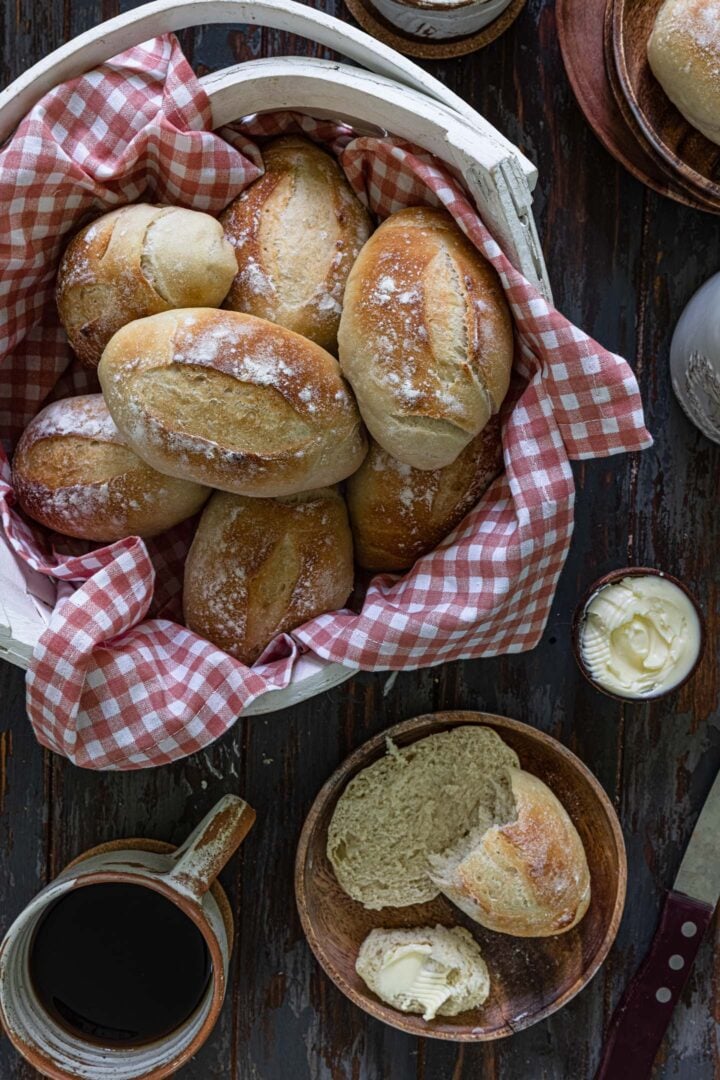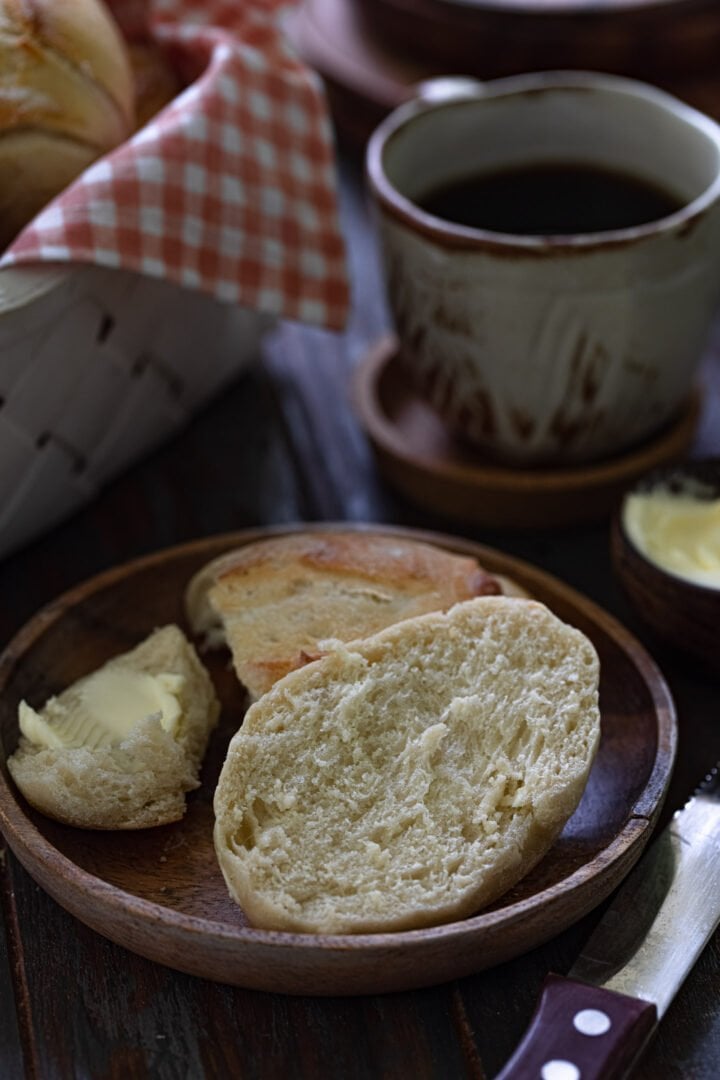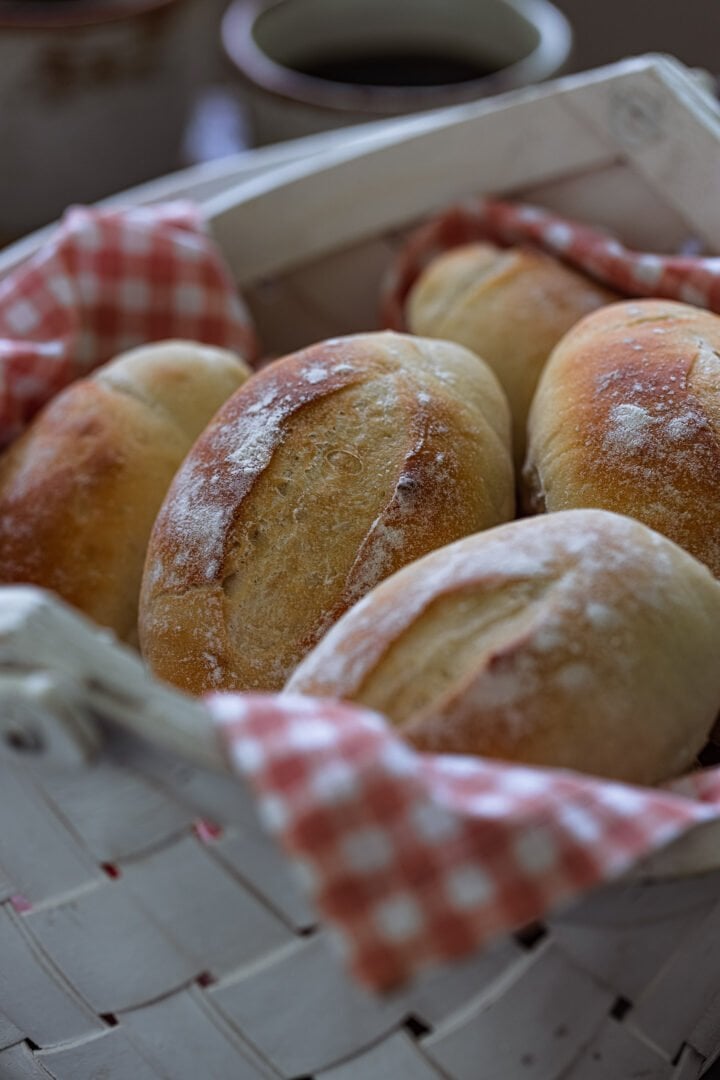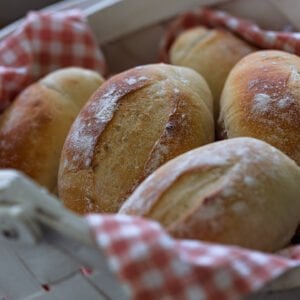Homemade bread is one of my passions. After you try these Brazilian rolls, make sure to also check out my Fluffy Brioche Buns, Mediterranean Black Olive Bread, French Baguettes and Honey Oat Bread. Phew! I can’t tell you what a relief it is to finally post this recipe. I get requests for it daily, and I was eager to get it done for y’all! I have been working on perfecting it for the past year or so. It was just a few small tweaks, but I just couldn’t publish it until it was absolutely perfect! I know how Brazilians are obsessed with pão francês, so the recipe had to be bullet proof! But, it is here! And they are perfect, crispy on the outside and soft on the inside, just like the ones they sell at the padaria. And they best part? They are homemade! ♥️
What is Pão Francês?
Pão Francês, also known as pão cacetinho, pãozinho or pão de sal in Brazil, is a bread roll made of wheat flour, water, salt and yeast. These rolls are crunchy on the outside and light and pillowy on the inside. They are popular not only in Brazil, but also in several other South American countries, such as Chile, Bolivia, Peru, Argentina and Uruguay, where they are called marraqueta or pan frances. According to a research done in 2019 by Puratos, pão francês is consumed by 95,7% of São Paulo’s population. You won’t find a single padaria (bakery) that doesn’t sell them!
Why is it called French Bread?
Back in the 19th century, the most common bread in Brazil was dark, possibly made of rye. It wasn’t until the 20th century that the pão francês was “invented”. According to my quick research, a little before the start of World War I, the Brazilian elite called their sons and daughters back from Europe. These teenagers/young adults came back and asked their family cooks or local bakeries to recreate the bread they used to eat in France: a cylindrical, white bread with a crispy golden crust – something like a small baguette. The most accepted hypothesis is that these cooks/bakers then came up with what we now know as pão francês. NOTE: Both Chile and Bolivia claim to be the inventors of pan frances and have their own theories/stories. I am sharing the Brazilian one because, well, I’m Brazilian! 😉 😉 😉
Ingredients
To make pão francês, you will need:
Flour – The best flour to make pão francês is good quality bread flour, such as King Arthur or Bob’s Red Mill. If you don’t have bread flour on hand, you can use all-purpose, but the rolls won’t be as chewy.Water – It needs to be lukewarm (between 100º and 110º F or 36.5º to 40.5º C )to bloom the yeast. If you don’t own a thermometer, you can run water over your wrist. The water should feel warmer than your body temperature but not hot, or it will kill the yeast!Yeast – I prefer to use active dry yeast. Blooming gives me the assurance that the yeast is alive. If you prefer to use instant yeast, that is also fine, and you can skip the blooming step.Sugar – A little bit of sugar helps create the beautiful golden crust.Salt – Don’t forget the salt or your bread rolls will be quite bland!Butter – A little bit of fat contributes to a softer crumb and also flavor! Some bakers use lard instead. You can also use olive oil if you prefer.
OPTIONAL
Sourdough Starter – It acts more as a flavor enhancer than as a leavener, as we won’t proof the dough for as long as it’d take for it to work with just the sourdough starter.
How to make Pão Francês
So I imagine you are anxious to know if making pão francês is hard. No, it is not! But it is not quick by any means as – like many other bread recipes – you will have to proof it twice! It also will get better and better the more you make it. It took me a long time tweaking the recipe to find the perfect temperature for my oven. As ovens change, it might take you a couple attempts to get it just right for you! Don’t give up! It is totally worth it and once you have it just right, this is a bread recipe you will want to make over and over again. Recommended tools and equipment: scale, stand mixer, proofing container, bench scraper, baking sheet, parchment paper, bread lame. Here’s how I make this pão francês recipe. As always, you will find the printable (and more complete) version of the recipe at the end of this post!
Step 1: Bloom the yeast.
Combine the lukewarm water, yeast and sugar. Cover and let it proof for 5 to 10 minutes, or until foamy. If you prefer to use instant yeast, you can skip this step. But make sure your yeast is fresh!
Step 2: Mix and Proof the Dough.
If using, mix the sourdough starter into the yeast mixture. Reserve.In the bowl of a stand mixer, whisk together the flour and salt. With the mixer running on low, pour the yeast mixture and add the softened butter. Mix until it starts to resemble dough.Turn the mixer up to medium-high and knead until the dough is smooth and elastic.Shape the dough into a large ball and transfer to a bowl or container greased with neutral oil or sprayed with nonstick spray.Proof overnight in the fridge or for 1-2 hours at room temperature, until doubled in size.
Step 3: First shaping.
Deflate the dough and place it on a clean surface. (No need to dust the counter with flour, as this dough shouldn’t stick!) Pat it into a large rectangle.Divide the dough in 9 equal pieces. I like to use a scale for accuracy, but you don’t have to! The rolls will vary between 90 to 95g each.Work with one piece at a time, covering the others with a towel to prevent them from drying out.Shape each piece with your fingers, making a small rectangle.Press the top (or bottom) edge to help stick it to your counter. That will create more tension and make rolling them easier!Roll up (or down), pulling it towards (or against) you to create more tension. Place it seam side down and cover the pieces while you work on the remaining ones.
Step 4: Second shaping.
For the second shaping, again, work with one piece at a time, keeping the others covered while you work.Place the piece seam side up and, using you fingers, gently massage it to deflate it slightly. Then, roll it up (or down), pulling and tucking gently, being careful not to tear the dough.Cover the rolls and let them rest 15 minutes.Gently roll the rolls back and forth to elongate them, then place them on a greased (or parchment paper lined) baking sheet, leaving an inch of space between them.Cover and let them proof for 45 min to 1 hour, or until puffed. They don’t necessarily need to double in size.
Step 5: Proof and Bake!
Pre heat your oven to 500ºF (260ºC) for at least 30 minutes.Using a bread lame, razor blade or sharp knife, make a slash on top of each roll. If you’d like your rolls to have “ears”, do it at an angle!Optional: dust the rolls with a little bit of flour for an artisanal look.Cover the baking sheet with foil. I recommend you spray the down side of the foil sheet with nonstick spray to prevent it from sticking to the rolls.Transfer the rolls to the oven and immediately lower the temperature to 475ºF (275ºC). Bake for 10 minutes.Remove the foil and lower the temperature to 450ºF (230ºC). Continue baking for another 10 – 15 minutes, or until golden brown.
What do you eat with Brazilian rolls?
In Brazil, pão francês is eaten for breakfast – with butter or requeijão – or used for sandwiches. They are best eaten fresh, meaning the day they were baked or, at the latest, the morning after! When not so fresh (day after, for example), they can be used to make pão na chapa. Just slice the roll each half, slather with butter and pan fry until golden! It is heaven! And when they are getting stale, we use them to make rabanada (Brazilian French Toast), pudim de pão (bread flan) or process to make farinha de pão (breadcrumbs).
More Brazilian Recipes
Pão de QueijoEmpadinhas (Hearts of Palm Hand Pies)Coxinhas (Chicken Croquettes)BrigadeiroLime Caipirinha
